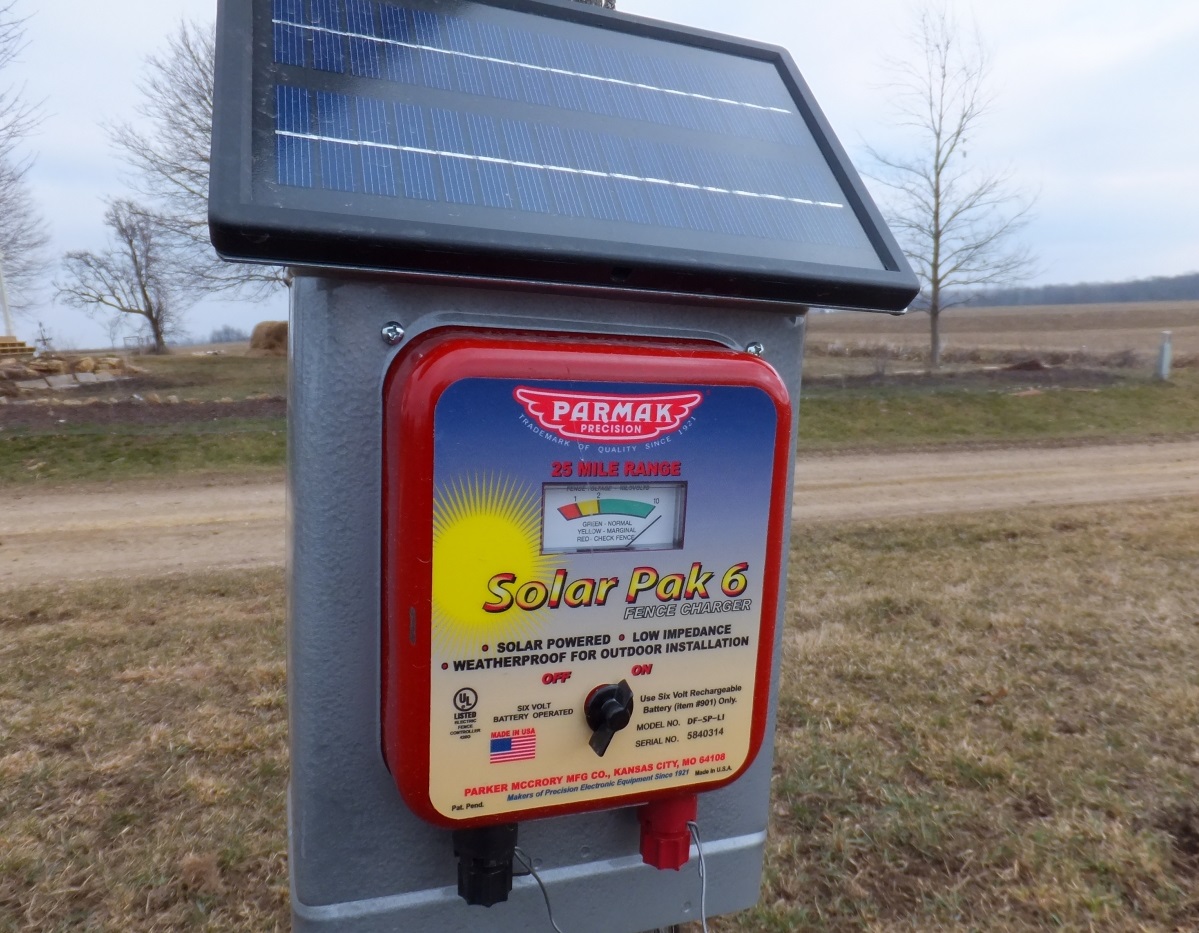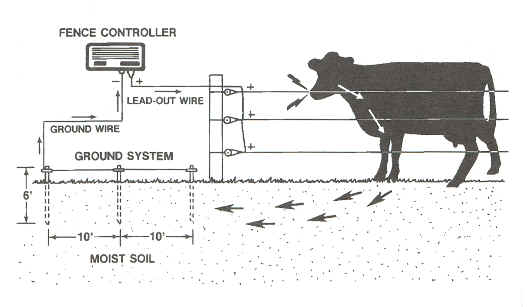Solar Fence or Electrical? How to Choose
A Solar fence comes with a controller (or energizer) which is the heart of an electric livestock fencing system. They come in a variety of shapes, sizes and colors. The fence controller is connected to a grounding system as well as the fence wire. This creates an open circuit. The circuit is completed when an animal touches both the fence wire and the ground at the same time. Electricity will pass down the fence wire, through the animal, into the soil, through the ground rods and up to the fence controller. This all happens instantaneously, and the animal receives a shock. Electric fencers are helpful in keeping your livestock in and harmful predators out.
Know How Your Electric Fence Works
A fence controller will not work effectively without proper grounding. For optimal results, you will need:
- A grounding system of three galvanized six-foot ground rods
- Three ground rod clamps
- Insulated hook-up wire
Ground rods can be galvanized or copper, six or eight feet in length and need to be spaced 10 feet apart.
How Will You Power the Fence?
If you have access to a 110-volt outlet, alternating current (AC) power is recommended. It is reliable and requires the least maintenance.
You can find three types of electric fences: electric grid powered, battery powered and recently solar powered are in demand. Each type is powered by a component called “electric fence charger” to convert the incoming charge into a safer form of electricity. The main difference among the three types is how the charger is powered.
Solar electric fences work with sunlight to power the charger, rather than an A/C outlet or a standard battery. Most solar-powered electric fences are used on farms or in remote areas where there is no easy access to the electrical grid. They’re used to contain cattle or livestock in a field or to keep unwanted animals out of a garden.
Solar electric fences work by sending the animal a shock when it comes in contact with one of the live wires. The solar chargers require batteries, but the batteries last a long time because they are constantly recharged by the sun.
How Much Does a Solar Electric Fence Cost?
Solar chargers range in price from about $100 to $500, depending on how many miles or acres the charger will power. Occasionally, they run as high as $1,000 or more. Electric fencing usually costs anywhere from $0.10 to $0.20 per foot – far less than conventional fencing.
Replacement batteries, which are necessary every three to four years, cost anywhere from $10 to $100, depending on the voltage.
Now, if you compare that price against losing a cow, or any of your livestock because they escaped…or say losing your hens because a coyote was able to enter…well, you do the math and you’ll find out what is more expensive.
Installing a Solar Electric Fence
Installing a solar fence is manageable for most do-it-yourselfers. The process involves mounting the solar charger where it will receive the maximum amount of sunlight, setting up posts, running the wire, grounding the system and attaching the fencing to the charger.
The step-by-step process is outlined here. If the directions sound like they’re written in a foreign language, you’re better off hiring a professional installer.
Keep in mind that the vast majority of problems with solar electric fences are related to improper grounding. If you don’t understand this step, seek help. Also, know that some cities and towns require a permit to install an electric fence, while others don’t allow electric fences at all. Check with local officials before installation.
Maintaining a Solar Electric Fence
The solar panel on your charger should be cleaned from time to time – a dirty or dusty panel will not operate at peak efficiency. Simply use a soft cloth and water.
The battery requires some maintenance, too, if you want it to last for several years. When the battery is not in use, make sure it is fully charged before it is stored. And during any period when the battery is stored, place it in the sun for three days every three months to recharge (with the controller off).
Solar Fence Pros
- Ideal for remote areas – Solar electric fences are widely used on farms where access to electricity is not constant, too expensive or nonexistent.
- Low maintenance – Solar electric charger batteries last a long time because they are constantly recharged by the sun. With traditional battery-powered electric fences, you’ll have to recharge the batteries yourself when the power gets low.
- No energy costs – You won’t see a spike in your electricity bill, as you would with an electric fence that is connected to the grid. And you won’t have replace the battery as often as you would with a traditional battery-powered electric fence charger.
Solar Fence Cons
- Price – Solar electric fences cost significantly more upfront than electric grid- or battery-powered electric fences.
- Not as powerful – Grid- and battery-powered chargers produce more electricity.
- Dependent on weather – A fully-charged solar electric fence can work for up to a couple weeks without sunlight. But if the battery is only partially charged during a period of days or weeks without much sunlight, you’re out of luck.
TRAIN STOCK TO RESPECT NEW FENCE INSTALLATION
Proper training of stock is important. Keep in mind that, it is not the wire that holds them, but their fear of the shock they receive each time they touch the wire. Training is easy and quick.
String a piece of wire, on insulators, across one section of barnyard about two-thirds height of animals. Place some tempting feed on opposite side of wire. Allow stock to approach the wire slowly so as to learn what gives them the sting. Then when they meet up with fence in field they will know why to respect it.
After one or two attempts to reach feed, stock will realize sting is coming from wire, and they are ready to be turned out into field. Ten to twenty minutes is usually time enough to complete training period. A short length of electric fence installed on the farm will make the stock think twice before touching any fence.
Remember: An electric Fence is not a toy, avoid grabbing electrified wires for fun, avoid touching wires with the head or neck. Always teach the kids not to do this kind of plays ever, and ans always keep an eye on your kids until they are resposnible enough to understand dangers of electric power.
Bear vs Electric Fence:
For more information:
https://www.kompareit.com/homeandgarden/fence-compare-solar-vs-regularelectric.html
https://commons.wikimedia.org/wiki/File:Fencing_diagram.JPG
https://humboldt-dspace.calstate.edu/bitstream/handle/2148/296/Final%20Thesis.pdf?sequence=1
https://www.youtube.com/watch?v=QHKMFRrFkCI




